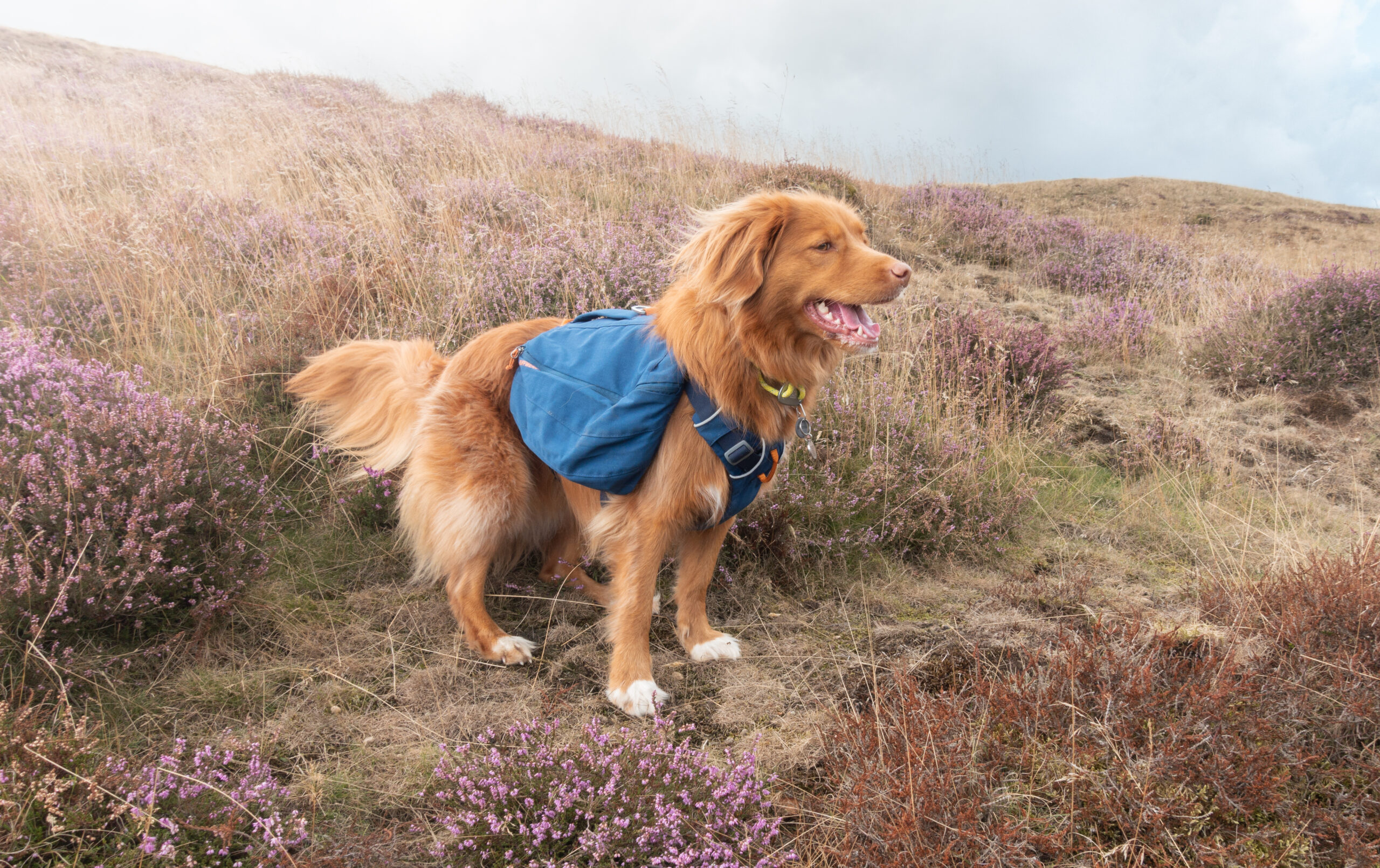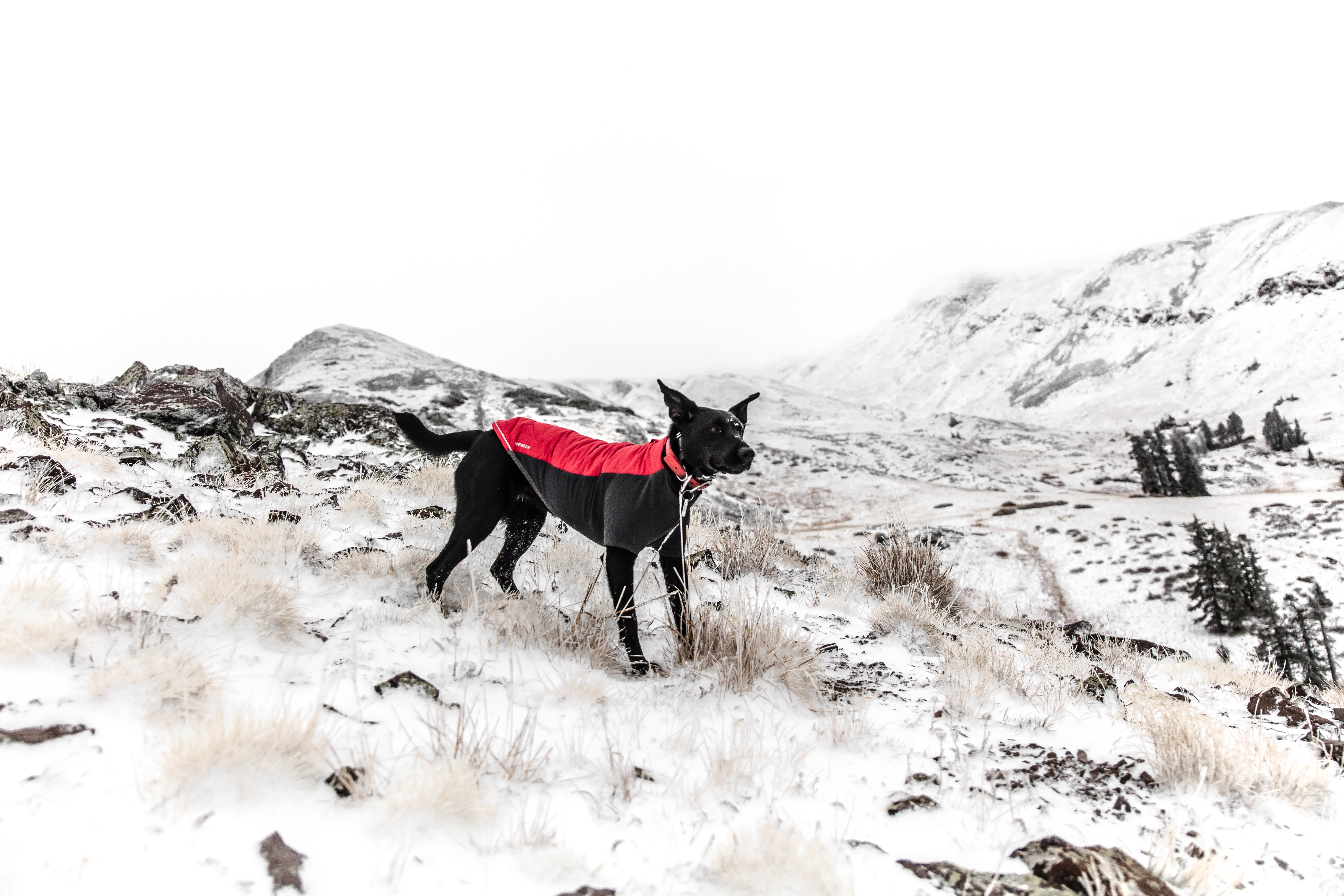Have you just acquired a small, fuzzy, noisy distributor of feces and chaos commonly referred to as a puppy? Fancy knowing how to hike with your dog? Or taking them out for some longer walks? If you’ve answered either of those questions with ‘yes’, this blog is for you.
Below are some of our best tips on how to hike with your dog and keep your furry companion safe on your outdoor adventures.

What to take on a hike with your dog?
Lead and collar
In the UK you’re required by law to have all dogs microchipped. A collar with a tag makes it much easier for someone to just give you a call.
This usually happens when you get separated from your dog during your hike. You may find a harness is more beneficial on a hike though.
It will help you assist your dog in getting over obstacles and also helps control them around livestock and wildlife if they’re not fully trained yet.
How to hike with your dog ? Pack a Flatpack bowl
This one isn’t always necessary depending on the time of year, where you’re walking and how far you’re going. For the size and weight of it, you might as well just bung it in your pack.
A flatpack bowl doesn’t take up much room compared to a full-sized traditional dog bowl. It is really handy if you’re far away from drinkable water sources.
Mini first aid kit
Not just essential for you, but a lot of bits in there can be transferred to your dog if you need to.
Tweezers can help with thorns, grass seeds and bee stings. A cut-up old sock with some tape can be added to make an impromptu tubi-grip.
Poo bags
Some places are okay with the ‘stick and flick’ rule but many public places and trails require you to take your dog waste with you. You should dispose it properly. Take spare bags just in case. It’s worth noting that despite some owners’ insistence on bagging their dog’s poo and hanging it from a tree (not sure on the logic here). This is not correct etiquette. The poo will decompose, the bag will not.
Spare food/treats
A small bag of treats are always appreciated. If you’re out for an especially long hike it may be a good idea to take a packed lunch for your dog. They need the energy too!
An old towel
An old towel has saved my car’s floor mats from Spaniel muck on multiple occasions.
If you’re just out for a day, leaving it in the car’s boot is a good idea.
If you’re camping, find a smaller, more packable towel and just pop it in one of the outer pockets of your rucksack. You can then dry them off before they inflict havoc on the inside of your tent.
A coat (and possibly boots)
Our dogs get cold too, and it can get particularly bad on snowy days.
Ice and snow can build up on the dog’s paws and undersides causing ice balls. These ice balls can be painful and annoying to your dog. There are loads of tips and tricks to keep this from happening, but the main two that come up are:
Keep the fur between your dog’s toes trimmed and, before you go out, spray a bit of vegetable cooking oil underneath their feet (yes really).
Then, when you get home. Check if you can find some ice balls on their paws and simply melt them away with a hairdryer (on the lowest setting). You can also achieve the same result by putting them in some lukewarm water. We stock a load of jackets, boots and accessories from Ruffwear.
You can use them if you’re in a particularly cold part of the country or own a short-haired dog that requires a bit more warmth.

Hiking with dog- General Etiquette
How to hike with your dog ? Pick up after your four-footed friend
We’ve already covered this one above, but it’s worth mentioning again.
Stick and flick can be fine, but use some common sense when doing so.
Is there livestock in the same area that could potentially ingest it?
Is it right on a public footpath? If in doubt, just pop it in a bag and take it with you.
Control them around livestock
It’s an offence to allow your pet to bother any livestock.
It’s always good practice (and a legal requirement on open access land) to keep your dog on a short lead around farm animals and horses.
It is important for your own safety and for the welfare of the animals. Even a dog with a strong recall can chase a sheep, cow, fox, squirrel or any other creature without much second thought.
Be mindful of wildlife
Be vigilant and respect any signage that requires you to keep your dog on a lead.
The access rights that normally apply to open country and registered common land require dogs to be kept on a short lead between 1st March and 31st July. It helps to protect ground-nesting birds. At the coast, there may also be some local restrictions to require dogs to be kept on a short lead. During the bird breeding season prevent disturbance to flocks of resting and feeding birds.
How to hike with your dog ? Speaking of wildlife…
Long grass can be home to insects, parasites and adders. It’s important to check for ticks when you get home. Also, if your pooch is ever bitten by an adder, try not to let it move and consult a vet as soon as possible.
Be vigilant with grass seeds and thorns. Grass seeds can cause a lot of discomfort for your dog. They can be sharp and can become embedded in their skin; most commonly their paws, ears, tail, underarms and groin area.
Vets recommend daily checking your dog, especially after a walk.
Respect other visitors
Our trails are home to people partaking in a wide array of activities, from walking, biking and running to horse riding and even paragliding.
Just be courteous, basically. In most cases, we’re all equally permitted to be there.
Keep your dog a sensible distance away from you so you can control them quickly if a bike or horse comes around the corner.
Or equally another dog that may not have had much social experience.

How to hike with your dog – Other things to keep in mind
Build dogs up to longer hikes. Especially when young. E.g. If you suddenly decide a 20 mile hike is a good idea. Double think if your dog is fit enough to be able to cope.
Could you carry your collapsed dog out with you? Be careful not to overdo it, basically. They can’t tell you in words that they’re tired or injured. Keep an eye on breathing and heart rate.
Take plenty of breaks and try to keep them from knackering themselves out in the first few hours.
Now that you know how to hike with your dog, you can both enjoy the great outdoors together.
Now it’s time to level up your outdoor skills with a guide on layering for warmth, safety and comfort

Leave a Reply